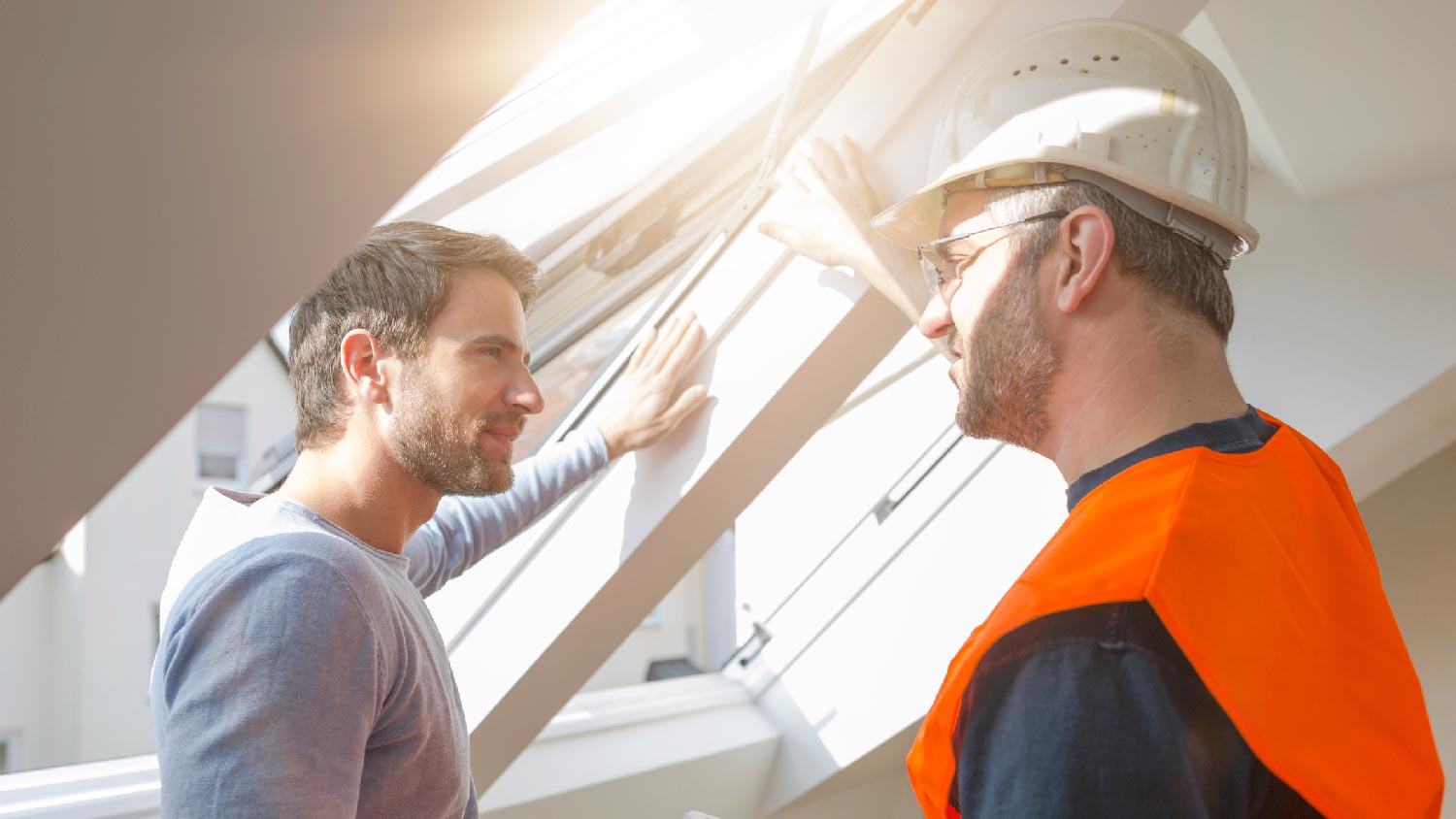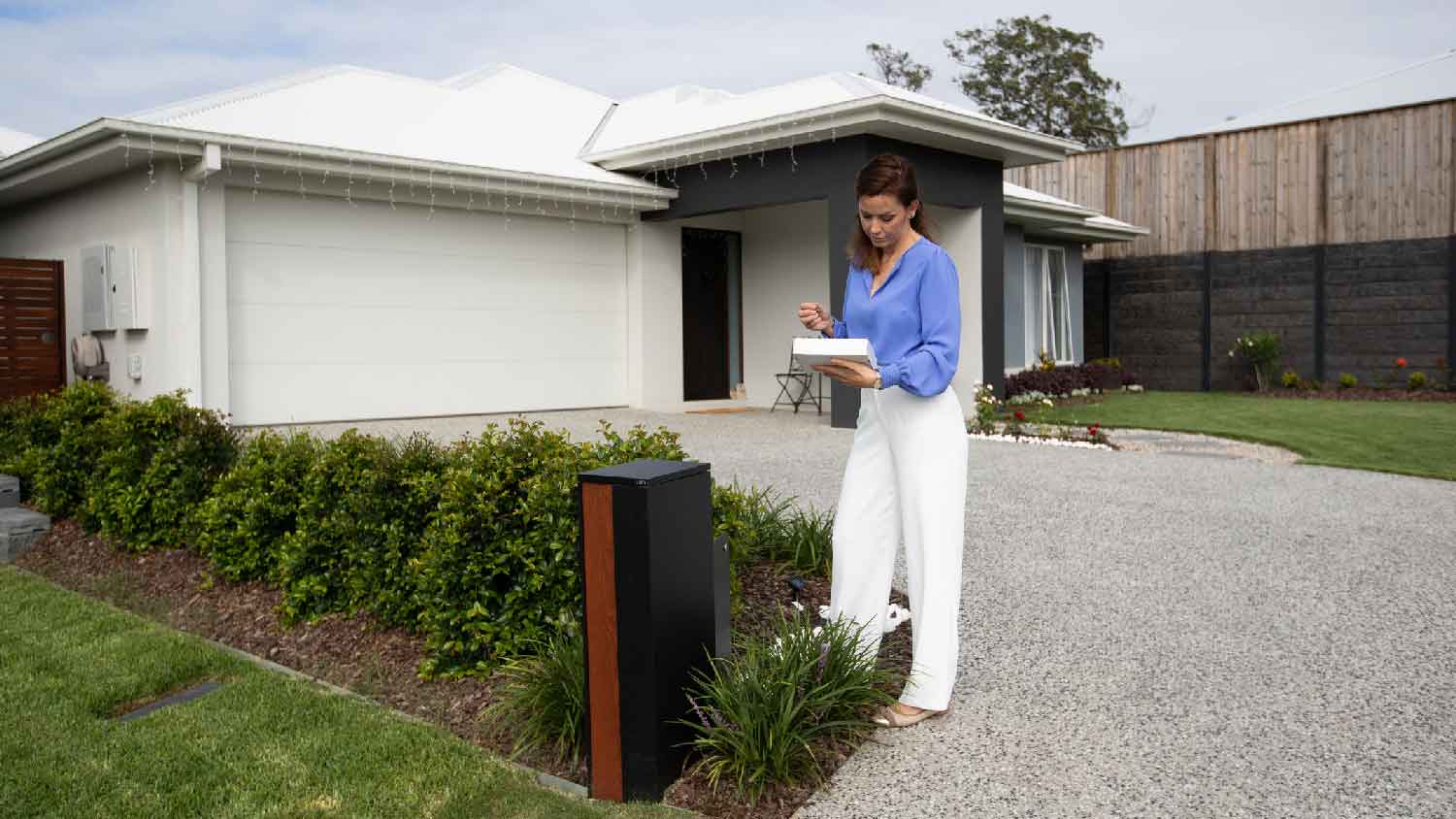
Drone roof inspection costs vary depending on the roof’s size, complexity, and material. Use this guide to budget for a drone roof inspection.
Discover the ins and outs of a green home inspection


A green home is a house built with energy efficiency and sustainability in mind.
A green home costs less to operate and has a higher resale value.
A green home inspection assesses a home’s use of energy and impact on the environment.
A green home can be a major draw for environmentally conscious buyers. These homes are built with a focus on sustainability and their environmental impact. Green home inspections are conducted by inspectors with additional certification that allows them to provide a comprehensive home inspection report that focuses on energy, sustainability, and impact for prospective buyers and homeowners.
If you’re in the market for a green home, it’s time to dive into the details of what makes a house environmentally friendly. Arm yourself with an understanding of what inspectors look for in a green home inspection to prepare for potential questions that may arise.
A green home is constructed with a focus on energy efficiency using sustainable, non-toxic materials that contribute to healthier living. Green homes often feature:
Low-flow plumbing
Energy-efficient appliances
Recycled building materials
Sustainable landscaping
Green homes are ideal for those searching to reduce their environmental footprint and limit their pollution exposure. Due to the energy efficiency and sustainability of these homes, they also cost much less to operate and have a high resale value.
A green home inspection identifies and confirms that green features are present and working within a home. It goes beyond a typical home inspection in that it assesses the home based on its energy efficiency, use of sustainable materials, and the promotion of human health.
The green inspection is conducted by a professional home inspector in your area who has completed a specialized training program such as the Green Rater certificate program. Green home inspections cost, on average, around $350.

When hiring green home inspectors, ask them about their focus on three key areas: energy efficiency, sustainable materials and practices, and human and environmental health. Some of the green elements that inspectors look for may not be visible, and documentation will have to be produced by the seller to confirm a green home inspector’s legitimacy.
Green home inspections begin by examining the energy efficiency of your home. They also assess the materials and methods used to build the home as well as the types of appliances installed.
Examples of energy-efficient materials and appliances include:
A thermostat radiant barrier on the roof
Vacuum insulation panels
Plant-based polyurethane foam (instead of fiberglass)
There are a few common problems the inspector may find that could cause your home to fail the energy efficiency part of the inspection, including:
Leaky windows
Lack of insulation
Inefficient heating and cooling systems
Green home inspectors don't evaluate the solar energy systems of the home or the measure of energy efficiency. This is done by an energy auditor, who has additional training in programs like the Residential Energy Services accredited program.
Energy auditors will look at:
the past year's energy bills
the energy consumption of appliances
air leakage testing
Another notable factor that green home inspectors will assess is sustainable building practices. Sustainable building refers to the use of materials and practices that support environmental responsibility and resource efficiency.
Sustainable materials include:
Soil found on the job site
Wood from fast-growing trees that uses less energy than traditional materials
Devices like low-volume toilets or shower heads that help conserve water
Common materials that fail a green inspection for sustainability include:
Unsustainably sourced wood
Asphalt or fiberglass roofing
Volatile organic compound paints or coatings

A green home inspector will also look at the factors of the home that contribute to human and environmental health. For example, they may assess:
Carpets that can hold allergen-containing particles
Concrete driveways that prevent rain from soaking into the ground
Lead paint that can pose a risk to human health
If your house has some of the following items, it may be deemed as a healthier home:
Adequate ventilation to improve indoor air quality
Low air leakage to maintain air quality and temperatures
High levels of natural light
Once the home inspector has completed their evaluation, they will give you a green home inspection report of their findings. The home inspection report will provide a list of any damages to the home, along with an assessment of the environmental factors listed above.
If your house is verified as a green home after the inspection, you may see some health and environmental benefits, including:
reduced operating costs
improved health
less immune distress
brighter daylight
A green home will also have a higher market value due to its green features and lower operating costs. Green homes, on average, sell for a premium of up to 6% higher compared to regular homes. Some energy-efficient features even allow green homeowners to apply for insurance deductions of up to 5%, as well.
From average costs to expert advice, get all the answers you need to get your job done.

Drone roof inspection costs vary depending on the roof’s size, complexity, and material. Use this guide to budget for a drone roof inspection.

If you’re buying a home, having an inspection offers reassurance that it’s in good condition. How much a home inspection costs varies depending on the home's size, age, condition, and location.

Not sure what you should expect from an attic inspection? This list outlines what your inspector will look for during the inspection.

An inspection tells you a lot about the house you’ll buy, but should you use a realtor’s home inspector? Learn the pros and cons of using your agent’s choice.

Who to call to identify a smell in your home depends on the type of smell. While a home inspector is the go-to, you may actually want to hire someone else.

Thinking about buying a condo? Use this comprehensive condo inspection checklist before you seal the deal.